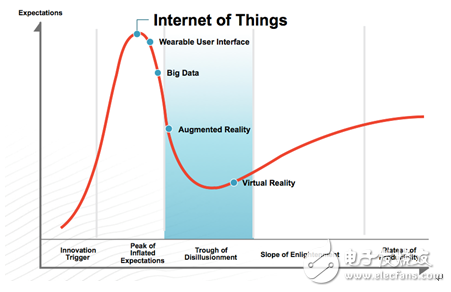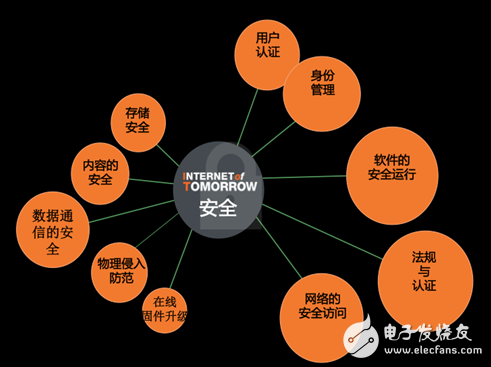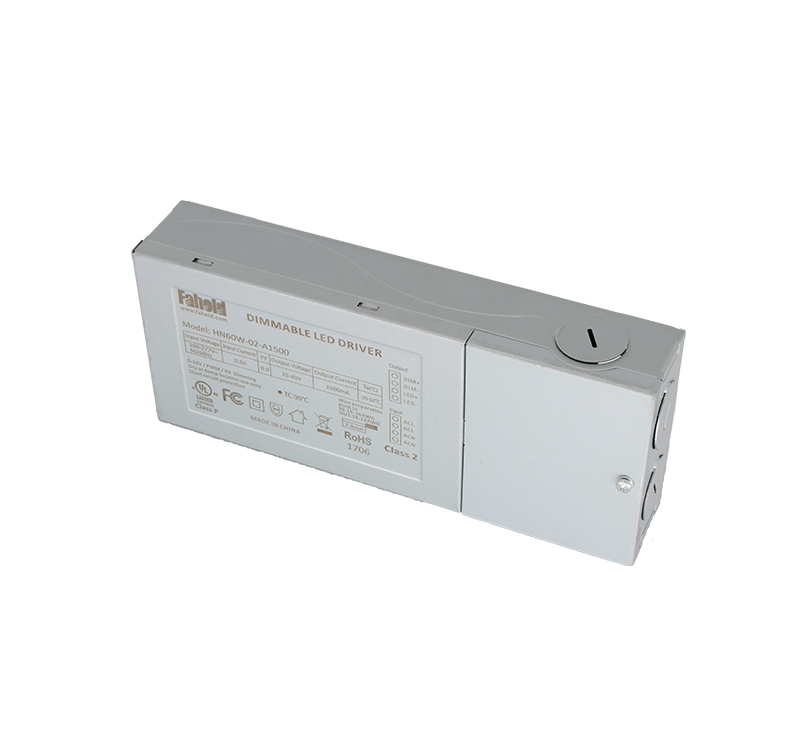Like the development of the Internet and the mobile Internet, the Internet of Things (IoT) has its own life cycle. So far, after a period of enthusiasm, the industry rationality, technology research and development, business logic, etc. are slowly stabilizing. As the underlying facilities of the Internet of Things industry, electronic components play a decisive role in the realization of products at the technical level, so their own development and the Internet of Things complement each other. At the "2015 MiCO Global Developers Conference" held on August 20th, the world's top semiconductor manufacturers Broadcom Broadcom, NXP NXP, Freescale Freescale, ST STMicroelectronics, Atmel Atmel, etc. were all present, from industry and technology. The perspective of the Internet of Things and the development of the intelligent hardware industry has been deeply shared.
The life cycle of the Internet of Things: 2020, ushered in rapid growth
The start of the Internet of Things concept was around 2010, and the new word IoT was created. At that time, everyone's expectations were high. In 2013 and 2014, in the IoT industry, especially in China, practitioners have experienced some painful experiences. The market may expect very good, but the shipment volume is not so big, because IoT is a new concept for chip manufacturers and models. The main manufacturers, machine manufacturers, and consumers all have a process of guiding, using, and purchasing on a large scale.

In the chip field, the most critical application of Internet technology is in wireless connectivity, mainly Wi-Fi and Bluetooth, and there are many technical difficulties that need to be overcome:
First of all, the interoperability between IoT devices and gateways is a key issue. At present, there are more than 100 protocol standards in the industry. For chip companies, the solution is to make technical joint work in advance. Second, security issues, early IoT devices are streaking, there is no security protocol content, many manufacturers have realized the importance of security, but 80% of IoT devices in China still need to be strengthened in security. Third, seamless connection. Shen Zhendong, Marketing Director of Broadcom Broadcom Wireless Connection Division, said: "The steady development of the IoT market, at least until 2020, the most difficult period may have passed, and it has entered a period of steady climb and is growing at a high speed. On the other hand, Broadcom's largest partner in China is Qingke, and the solution with MiCO has helped many Chinese manufacturers to bring their products to the market. As a chip company, Broadcom can do end-to-end input for IoT. This is our characteristic."
Flexible and efficient microcontroller: suitable for different application scenarios
MCUs (microcontrollers) are the most basic infrastructure in the Internet of Things, the most basic hardware unit. Therefore, the development of the electronic components industry and the Internet of Things is closely related. In the intelligent IoT architecture, there are some basic nodes: Internet, IP network, gateway, sub-network, wireless connection, device node. In this architecture, the LAN can connect directly to the cloud through different connections. In the world of Internet of Everything, each node has a sensing device, and a collection device that collects all sensor data, and a sensor concentrator device that processes or transmits the data.

The Internet of Things architecture has many nodes and standards. The arrival of the Internet of Things (Internet 3.0) era urgently requires application development on various IoT devices to adopt the same software platform, unified device control interface, interactive interface, and cloud service. Access interface, improve software reuse, reduce development difficulty and improve development efficiency, while Shanghai Qingke's MiCO IoT operating system provides a one-stop solution. MiCO includes a real-time operating system kernel for IoT devices with an open architecture that does not depend on the microcontroller (MCU) model. Thanks to the flexibility of the MiCO system, users can choose an embedded hardware platform for application direction and development preferences. Shanghai Qingke has united major semiconductor manufacturers, transplanted MiCO to the corresponding MCU platform and co-customized the development kit MiCOKit. The development kit includes a demo application that quickly connects to the cloud platform, various sensor applications, and uses a smartphone or tablet. The computer can be safely controlled and operated.
MiCOKit has many application scenarios: First, MiCO has mature applications of home appliances and lighting products, which can realize remote control of such devices, cloud data analysis, etc. Secondly, open portable wearable devices for IoT devices and the surrounding environment. Monitoring and tracking, that is, all kinds of sensors are concentrated, such as environment, temperature, PM2.5, heartbeat, gyroscope, etc. After the collected data is processed by the algorithm, some other devices are processed through the cloud. Interaction and processing, and then feedback to the original device; Third, the voice triggering scheme, through some specific interfaces, can realize voice monitoring, processing and recognition.
Targeting the Internet +: Secure Embedded Solution
When it comes to the Internet of Things, one has to consider a very core issue - security. Security issues are closely related to everyone. When people need to input their personal information, especially when they use credit card spending, they will always be worried about whether their information will be leaked. Freescale Freescale offers a full range of solutions in the Internet of Things, including not only critical nodes, gateways, and cloud-based devices, but also microcontroller and microprocessor-based security solutions for endpoints.

Embedded applications have six requirements for security: user authentication, trusted services, secure communications, secure content management, secure network access, and protection against physical intrusion. "Freescale offers solutions for these major security issues, including security key management and protection; data confidentiality, integrity, and data security storage, authentication assurance, firmware, and intellectual property. Protection and some regulations, qualifications, etc.," said William Jiang, Freescale's MCU Applications Manager for Greater China.
MiCO and chip hard and soft: "bridge the future" in the complex IoT market
The underlying development is crucial to the development of the Internet of Things industry. Without mature technologies and solutions, the intelligent hardware industry will become a source of waterlessness. "IoT is a very complex market. In addition to the requirements of software standards, there are also high requirements in hardware standards, especially in computing. MCUs are widely used, and MCUs with wireless technology and low-level software can form good applications. solution."
Wang Peng, Director of Product Marketing, NXP Semiconductors Microcontroller, Greater China, said: "The four major trends of energy efficiency, equipment interconnection, security and health are driving the development of the entire electronics industry. NXP is in microcontrollers, RF and some In the interface products, these areas are escorted."
Atmel Asia Pacific President Richard Lin said, "Atmel has a bold design that is encrypted hardware, integrated encryption technology in the MCU, to help meet the security needs of IoT products."
At the same time, we should also see another manifestation of the complexity of the Internet of Things is fragmentation, different products have different requirements for MCU. Cao Jindong, senior manager of ST China's microcontroller market, said: "Shanghai Qingke MiCO software system solves the problem of data transmission, simplifying the most difficult part of the software, and ST does the lower-level part of data acquisition and transmission processing. We partnered with Qingke to launch the MiCOKit development kit to create a flexible platform at the board level, allowing users to change MCUs anytime, anywhere to achieve different functions."
At the MiCO Developers Conference, the theme of "Internet-based big data analysis brings new opportunities in hardware" roundtable forum, Zhiren co-founder and editor-in-chief Guo Ren said: "In the context of the Internet of Things, regardless of chips or products, Both are closer to our lives, and there are also big data and cloud computing support behind them.†The development kits of major electronics manufacturers and MiCO, focusing on improving the platform and adaptability of intelligent hardware development, will help the Internet of Things. The industry establishes standardized enterprises and processes. (Finish)
High PFC Junction Box Led Driver(UL Cert.)
A High PFC and rugged Iron enclosure that complies with electrical codes requiring junction boxes to separate household and low voltage wiring.
With the increasing demands for safety levels, and then the North American market does not allow the wiring to be exposed, so the production of Junction box Led Driver.High security level, with short circuit protection, but also do dimming and non-Dimming Led Driver.
Features & Benefits
- UL Listed
- Powder-coated iron
- High PFC
- Lightweight
Details
The HN-Junction Box is a high PFC, rugged iron enclosure designed for use with our Constant Current Drivers. This junction box is a NEMA 1 rated indoor enclosure made of lightweight but strong iron with a protective black powder-coated finish. Designed for contractor installation, this junction box is ULListed and features separation for low-voltage and high-voltage wiring in an electrical enclosure. It features four 0.20 inch mounting holes for surface mounting and is designed with mounting hole positions to hold compatible power supplies securely.The HN-Junction Box is for use with the following Constant Current Drivers only:
- 1) 100-347Vac 25-42Vdc 1300mA
- 2) 100-347Vac 25-42Vdc 1100mA
- 3) 100-277Vac 25-40Vdc 1500mA
- 4) 100-277Vac 25-40Vdc 2000mA
Product Specs
Output voltage:25-40V
Output wattage: 45W
Dimensions:188x86x33 mm
Efficiency:88%
Encironment/IP Rating: indoor/IP20
Max. Input voltage:277V
Dimming way: 0-10V/PWM/RX
Certificate: UL, FCC, Class P

Junction Box Led Driver
Ul Standard Led Driver,Led Panel Light Junction Box,Led Panel Light Driver
ShenZhen Fahold Electronic Limited , https://www.fahold.com